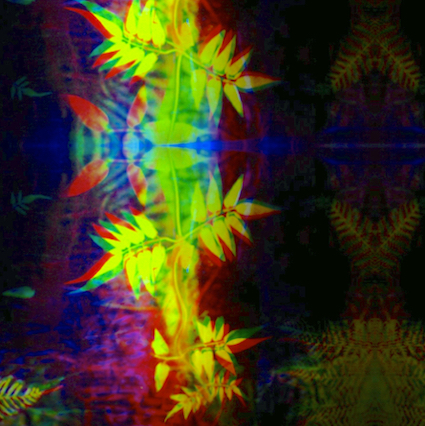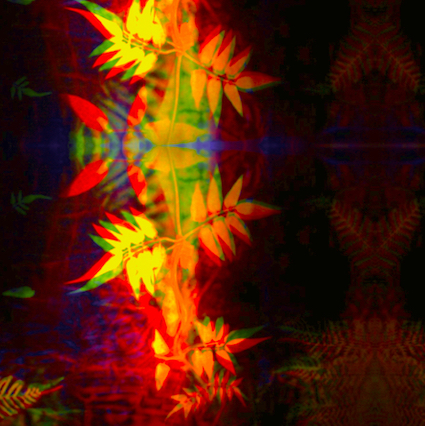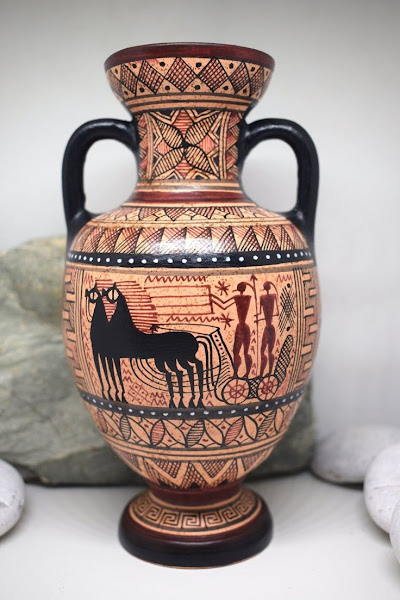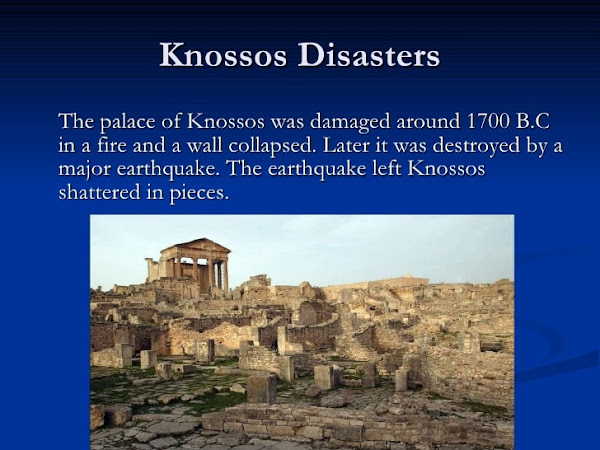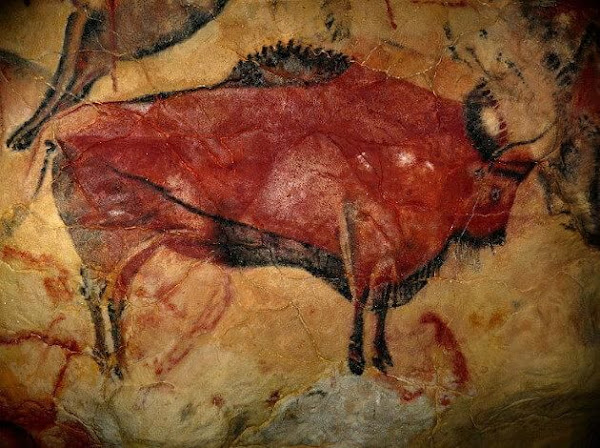<
Preamble
For your convenience I have listed below other posts featuring my prints on paper that has featured on this blogspot:
Made to Order
Unique State (Partners in Print)
Veiled Curtains
A Letter to a Friend
Beyond the Fear of Freedom
Travelling Solander Project
Star Series
Imprint
Cry for the Wilderness
Federation on Hold – Call Waiting
Wish You Were Where?
The Four Seasons
The Creation of Hurricane Katrina – The Disruptor
The Creation of ‘Whose Place? My Place, Your Space’
The ‘Vine Glow’ Series
Vine Glow - Series 2
Vine Glow - Series 3
‘Whose Church?’
‘A Journey Ends . . . Another Nightmare Begins’
Introduction
The interaction between man and the environment is of growing concern as the human population is accelerating towards 9 billion people.
Our existential need for food, clothing, shelter, minerals and energy has placed enormous pressure on the biosphere via de-forestation and de-habitation on a grand scale, thereby destroying the natural carbon sinks (such as flora) and at the same time, creating greenhouse gas sources, causing an unprecedented anthropogenic change of the Earth’s atmosphere. The philosophy underlying my ‘Environmental Art’ strives to prick the viewer’s consciousness to garner support for sustainability.
The works on paper in this blog post, 'Vine Glow - Series 2', rest on the premise that native plant species are fragile in the modern world and are a threatened biological resource.
Background
I have been designing and creating imagery for my hand printed works on paper using a range of traditional, improvisational and signature printing techniques for more than three decades. Examples of these techniques include collographs, etchings, stamping, stencilling, mono printing, traditional screen printing, improvisational screen printing and my own signature screen printing techniques which I have termed, matrix formatting, multiplexing and low relief screen printing. In addition to these techniques, I have been experimenting with hand printing techniques using disperse dyes on synthetic/polyester fabrics for more than two decades. These experiments have led to one of my signature techniques that I have developed and termed - MultiSperse Dye Sublimation (MSDS). The MSDS technique employs disperse dyes and involves hand printing multiple resists and multiple overprinted layers employing numerous color plates and low relief plant materials. The completed works are rich in color, light, shade, contrast, movement and depth. The multiple layers also imbue a painterly aesthetic and textural, three-dimensional quality to the finished ArtCloth works. Each print is unique and cannot be replicated.
As a professional senior graphic designer/illustrator in a previous career, I have always had an interest in creating imagery, prints, illustrations, posters and publications using digital processes. This interest has led me to some fascinating explorations in the field of digitally created works on paper and textiles. This post focuses on my new digitally designed prints on paper series - ‘Vine Glow - Series 2’.
Please email me at - Marie-Therese - for more information or if you are interested in purchasing any of the prints for yourself or for a friend!
Hope you enjoy these digitally designed prints on paper!
Marie-Therese
'Vine Glow - Series 2'
Digitally Designed Prints on Paper
The ‘Vine Glow - Series 2’, digitally designed prints on paper have been based on one of my personal and unique prints on cloth which employs my signature MultiSperse Dye Sublimation (MSDS) technique. The imagery was scanned and digitally reworked in Photoshop to create a superb complimentary colorways suite by manipulating pixels, adding and subtracting colors, layers and marks with the intention of imposing my vision to create this second unique digital print series. ‘Vine Glow - Series 2’ comprises a consistency with respect to ‘visual balance’ by employing color, form, highlights and shadows to the foreground and background imagery revealing a uniform harmony that contains depth and a luminous quality to the printed works and which encompass the deeply rich, abstract vine shapes with vivid, saturated foreground hues.
These deconstructed, contemporary, botanically influenced images have been intentionally designed to give the illusion of an aesthetic ‘glow’ and portray another world view of our beautiful fragile flora.
There are four sets of prints in 'Vine Glow - Series 2',namely,
'Vine Glow - Series 2' I
'Vine Glow - Series 2' II
'Vine Glow - Series 2' III
'Vine Glow - Series 2' IV
Each set consists of a limited edition of three signed prints throughout the series (eg., designated as: 1/3, 2/3, 3/3). Each printed image is 15.7 cm wide x 15.7 cm high and is printed on archival white inkjet paper stock measuring 21 cm wide x 30 cm high (i.e., A4 size).
Title: 'Vine Glow - Series 2' I.
Technique: Digitally designed print.
Image Size: 15.7 cm (wide) x 15.7 cm (high).
Paper Stock and Size: Archival white inkjet paper stock measuring 21 cm wide x 30 cm high (i.e., A4 size).
Edition Prints Available: 1/3, 2/3, 3/3.
Title: 'Vine Glow - Series 2' II.
Technique: Digitally designed print.
Image Size: 15.7 cm (wide) x 15.7 cm (high).
Paper Stock and Size: Archival white inkjet paper stock measuring 21 cm wide x 30 cm high (i.e., A4 size).
Edition Prints Available: 1/3, 2/3, 3/3.
Title: 'Vine Glow - Series 2' III.
Technique: Digitally designed print.
Image Size: 15.7 cm (wide) x 15.7 cm (high).
Paper Stock and Size: Archival white inkjet paper stock measuring 21 cm wide x 30 cm high (i.e., A4 size).
Edition Prints Available: 1/3, 2/3, 3/3.
Title: 'Vine Glow - Series 2' IV.
Technique: Digitally designed print.
Image Size: 15.7 cm (wide) x 15.7 cm (high).
Paper Stock and Size: Archival white inkjet paper stock measuring 21 cm wide x 30 cm high (i.e., A4 size).
Edition Prints Available: 1/3, 2/3, 3/3.
Preamble
For your convenience I have listed below posts on this blogspot that featured the artistic output of Helen Lancaster (my dear friend who passed away on the 11th February 2020).
Cane Toad Narrative (Exhibition - ArtCloth: Engaging New Visions)
Transformation. An Exhibition of Contemporary Textiles
Curator: Helen Lancaster
Floating: Art Exhibition @ Purple Noon Art And Sculpture Gallery
Celebration
The Barrier Reef Corporate Wall [1]: Art Cloth Panels
Helen Lancaster's - The Great Barrier Reef
Introduction [1]
Helen Lancaster has often alternated exhibiting her painted artworks with textile exhibitions. Working with fabric and thread she intuitively created without a sketch or in fact a plan of action. Rather she found that in her case a detailed sketch would destroy the spontaneity and freshness of her work in textiles. A few quick sketches may suggest a possible direction, but once the work was underway these sketches were never evident in the final work.
Textural form dominated Helen Lancaster's work and her time. As she reflected - "Textures bubble, collide and explode as I manipulate the fabrics into more sculpted forms."
Helen Lancaster, textile artist and Curator of the Transformation exhibition at Fairfield City Museum and Gallery, Sydney, with her soft sculpture - “The Wedding Cake”.
The free machine embroidery work she produced on a 830 Bernina domestic sewing machine.
Most of Helen Lancaster's techniques were accomplished with just three stitches - the straight, zigzag and satin stitches. Click on link - Satin Weave - for more information.
She enjoyed changing the surface of her artwork with pin tucks adjacent to each other using twin needles, shirring with elastic hand wound onto the bobbin, sewing with straight lines and shapes like O's and C's and creating dots using the satin stitch and manipulating the created fabric further with padding.
One of her favorite special effects was obtained by satin stitching over and over on the same line until it made a high ridge.
"I started to do this as a result of seeing a Rouault painting. It was astonishing for me to see the thickness of the dark outline. I persisted, even though it was fairly dangerous and an expensive technique, given the number of needles I broke.
Georges Rouault, The Three Judges (ca.1936).
The Barrier Reef Corporate Wall [1]: Art Cloth Panels by Helen Lancaster
This work is like the multiple windows in an aquarium, with kaleidoscope glimpses of fish flashing by. "The Barrier Reef Corporate Wall' was first exhibited in 1990 with 25 tiles and it is still growing: it will ultimately consist of 150 tiles.
This is a memory wall, reminding me of the beauty of the Great Barrier Reef and the magical glimpses when peering underwater with that first pair of goggles. I want people to love and cherish this enchanting heritage.
Note: I have used transparent acetate to achieve the illusion of water and my color palette is vibrant in order to create exciting color combinations.
Title: The Barrier Reef Corporate Wall, 1990 (detail).
Title The Barrier Reef Corporate Wall, 1990 (detail).
Title: The Barrier Reef Corporate Wall, 1990 (detail).
Title: The Barrier Reef Corporate Wall, 1990.
Technique: Machine embroidery on acetate.
Size: 25 squares with each square 25 x 25 cm.
Reference:
[1] H. Lancaster, Portfolio Collection, Telos Art Publishing, Winchester, England (2002).
Preamble
For your convenience I have listed below all posts in this series:
Arte Latino Textiles
Arte Latino Prints
Arte Latino Sculptures - Part I
Arte Latino Sculptures - Part II
Arte Latino Paintings - Part I
Arte Latino Paintings - Part II
Arte Latino Paintings - Part II [1]

Title: Screen (1996).
Artist: Roberto Gil de Montes (1950 - ).
Technique and Materials: Oil on canvas.
Size: 182.9 (high) x 274.3 cm (wide).
Courtesy: Smithsonian American Art Museum.
Acquisition: Museum purchase made possible by Luisita L. and Franz H. Denghausen Endowment.
Comment[1]: In "Screen" a man poses in front of a green background and gazes at the viewer. His dark hair is neatly combed, his clothing is meticulously pressed - he even wears a necktie - and his face is clean shaven. Since the man is expressionless it is hard to tell what he might be thinking. His features are partially veiled by a thin curtain that is decorated with a floral motif. Gil de Montes prompts us to question the veils we use to shield ourselves from the world.
Title: Camas para Sueños (Beds for Dreams) (1985).
Artist: Carmen Lomas Garza (1948 - ).
Technique and Materials: Gouche.
Size: 71.4 (high) x 52.1 cm (wide).
Courtesy: Smithsonian American Art Museum.
Acquisition: Museum purchase made possible through the Smithsonian Institution Collections Acquisition Program.
Comment[1]: Carmen Lomas Garza is a story teller. Carmen and her sister are on the roof, looking at the moon and talking about their desire to become artists. It is clear they are close: they share similar hairstyle and clothing - even down to their sandals. The night sky is dark and cloudy, but their shared bedroom glows with light. Blue curtains frame their mother, to whom Lomas Garza dedicated this work. Wearing a bright yellow pattern dress and crisp apron, she gently snaps the bright red blanket with loving care over the bed in preparation for a night of pleasant dreams.
Title: The Protagonist of an Endless Story (1993).
Artist: Angel Rodríguez-Díaz (1955 - ).
Technique and Materials: Oil on canvas.
Size: 182.9 (high) x 147 cm (wide).
Courtesy: Smithsonian American Art Museum.
Acquisition: Museum purchase made possible in part by the Smithsonian Institution Collections Acquisition Program.
Comment[1]: The "protagonist of an endless story" is Sandra Cisneros, an acclaimed Chicana author of poetry and fiction. Standing against a dramatic sky, Cisneros strikes a confident pose. She is dressed in a black Mexican dress that is decorated with sequins and embroidery, and holds a pattern rebozo (shawl) that snakes around her bejewled arms. The main character in this visual drama, Cisneros is "nobody's mother, and nobody's wife", as she stated in the authors note in her acclaimed novel, "The House on Mango Street". In this large canvas the artist has purposely positioned the subject amongst healthy vegetation that climbs towards an emblazoned sky as it presses against the painting's edges.
Title: The Death of Rubén Salazar (1986) (Sectional View).
Artist: Unknown.
Technique and Materials: Oil on canvas.
Size: 182.9 (high) x 147 cm (wide).
Courtesy: Smithsonian American Art Museum.
Acquisition: Museum purchase made possible in part by the Luisita L. and Franz H. Denghausen Endowment.
Comment[1]: On August 29, 1970, Rubén Salazar was killed when he was struck in the head by a tear gas canister that the Los Angeles County sheriff deputies fired into the Silver Dollar Bar. Nearby, an anti-Vietnam War demonstration was taking place as a part of the Chicano Moratorium. Salazar was a writer for the Los Angeles Times and a television and radio journalist who was often outspoken on issues of racial injustice.
Title: Sinews.
Artist: Paul Sierra (1944 - ).
Technique and Materials: Oil on canvas.
Size: 184.2 (high) x 256.2 cm (wide).
Courtesy: Smithsonian American Art Museum.
Acquisition: Museum purchase made possible by the Catherine Walden Myer Endowment Endowment.
Comment[1]: In "Sinews" an indistinguishable figure appears bogged down in a swamp filled with wild reeds and thick, swirling color of a river. A layer of bright yellow and white supports the shadow figure, forming a protective light that counters the murky water and blue-black sky in the distance. There is a suggestion of escape through the long branches near the figure's right hand. This lone figure in a primal landscape represents humanity's constant struggle against and triumph over the forces of nature.
Title: Mis Hermanos (My Brothers).
Artist: Jesse Treviño (1946 - ).
Technique and Materials: Acrylic on canvas.
Size: No dimensons given.
Courtesy: Smithsonian American Art Museum.
Acquisition: Gift of Lionel Sosa, Ernest Bromley, Adolfo Aguilar of Sosa, Bromley, Aguilar and Associates.
Comment[1]: No comment published.
Title: The Magic Room.
Artist: Patssi Valadez (1951 - ).
Technique and Materials: Acrylic on canvas.
Size: 243.8 (high) x 303.8 cm (wide).
Courtesy: Smithsonian American Art Museum.
Acquisition: Museum purchase through the Smithsonian Institutions Collections Acquistion Program.
Comment[1]: Vibrant, saturated colors electrify this topsy-turvy, magical room, where heavy theatrical curtains frame a wild and energetic scene. Nothing is stable: carpet patterns swirl like whirlpools, wine glasses topple, chairs tip, rock and float. Gymnastic rings swing freely side-to-side, as four balls on their own bounce merrily through the room. The green chair on the left climbs the thick curtain while a blue chair dances sensuously with the table - forks hanging on for dear life. Overall, the effect is dizzying, and yet despite the uneasy perspective, a balance exists between fantasy and reality.
Reference:
[1] J. Yorba, Arte Latino: Treasures from the Smithsonian American Art Museum, Watson-Guptill Publications, New York (2001).
Preamble
For your convenience I have listed below other posts in this series on Chinese textiles:
Chinese Textiles: Amy Clague's Brocade Collection (Part I)
Chinese Textiles: Amy Clague's Tapestry Collection (Part I)
Chinese Textiles: Amy Clague’s Tapestry Collection (Part II)
Chinese Textiles: Amy Clague’s Embroidery Collection (Part I)
Chinese Clothing Historical Overview (Part I)
Chinese Clothing Historical Overview (Part II)
Chinese Clothing Historical Overview (Part II) [1]
By the time of the Song Dynasty (960-1279) the Han women had developed the tradition of chest-binding, resulting in the rise in popularity of the elegant, cloak-like beizi favored by women of all ages and all social backgrounds.
Song Dynasty women wearing beizi (褙子), Northern Song dynasty (960–1127 AD).
The Yuan Dynasty (1206-1368) was established by the Mongols when they unified China. The Mongols at the time wore mao li or triangular hats, and men often wore earrings. The official dress code became a mixture of Han and Mongols styles.
Traditional Mongolian Dress.
When power again transferred to the Han people, the rulers of the Ming dynasty (1368-1644) created laws prohibiting the previous dynasty's Mongol language, surnames and clothing, resulting in a return to the dress style of the Tang dynasty. The official uniform of the Ming Dynasty was intended to reflect a sense of dignity and splendor, as demonstrated by the complex forms, styles and dressing rituals of the emperor and officials of all levels.
Ming Dynasty ladies dress.
The Qing Dynasty, lasting over two hundred years (1644-1911) was a period which saw significant changes in clothing style. The rulers tried to force the Manchurian dress style on the Han people, and this was met with strong resistance. A later cmpromise by the government led to a combination of the two dress styles. The mandarin long gown (changpao) and the jacket (magua) was the quintessential Qing style.
Traditional Chinese Qing Dynasty Dress for Women.
Traditional Chinese Qing Dynasty Dress for Men.
After 1840, China entered the modern era. Coastal cities, especially metropolises like Shanghai with their mixed population of foreign and native residents, led the change towards western style clothing under the influence of European and American fashion trends. Industrialization in textile weaving and dyeing in the west brought about the import of low cost materials, gradually replacing domestic materials made in traditional ways. Fashionable and intricately-made ready-to-wear garments in western styles found their way into the Chinese market, as well as large-scale, machine-consuming traditional techniques of hand rolling, bordering, inlay and embroidery.
Wedding dresses manufactured in Hong Kong for today's market.
Looking back at twentieth-century Chinese clothing, we see a wide array of styles of qipao, cheongsam, the SunYet-sen uniform, student uniforms, western suits, hats, silk stockings, bell-bottoms, jeans, miniskirts, bikinis and punk styles, all representing different eras. The qipao is now regarded as typical Chinese dress style, only became popular in the 1920s. Originating as Manchurian women's dress, incorporating Han clothing techniques and the styles of twentieth-century western dresses, it has now evolved into a major fashion item within the international fashion industry.
Qipao dress.
China, as a country made up of fifty-six ethnic groups that have continually interacted, has undergone continuous transformation in dress style and customs. Style distinctions are not only evident between different dynasties, but are also quite pronounced even in different periods within the same dynasty. The defining characteristics of Chinese clothing are bright colors, skilled craftsmanship and ornate detail. Diversity in style can be seen between different ethnic groups, living environments, local customs, lifestyles and aesthetic tastes. Chinese folk clothing is deeply rooted in daily life and activities of the people and many traditional folk styles and accessories are still popular today, for example, red velvet flower hair accessories, embroidered keepsakes, coil hats and raincoats made of natural fiber, not to mention handmade children's tiger-head hats and shoes, pig-head shoes and cat-head shoes.
Progress of modernization is having an effect on the ethnic character of dress style. However in rural areas a wide array of beautiful garments and ornaments are still very much part of the local lifestyle and landscape.
The traditional image of a worker wearing a front closure Chinese jacket in October 2009.
Four Chinese designers held a joint fashion show in Shanghai Fashion Week in October 2009.
Reference:
[1] Chinese Clothing, H. Mei, Cambridge University Press (2011).
Preamble
This is the twelfth post in a new Art Resource series that specifically focuses on techniques used in creating artworks. For your convenience I have listed all the posts in this new series below:
Drawing Art
Painting Art - Part I
Painting Art - Part II
Painting Art - Part III
Painting Art - Part IV
Painting Art - Part V
Painting Art - Part VI
Home-Made Painting Art Materials
Quality in Ready-Made Artists' Supplies - Part I
Quality in Ready-Made Artists' Supplies - Part II
Quality in Ready-Made Artists' Supplies - Part III
Historical Notes on Art - Part I
Historical Notes on Art - Part II
Historical Notes on Art - Part III
Historical Notes on Art - Part IV
Historical Notes on Art - Part V
Tempera Painting
Oil Painting - Part I
Oil Painting - Part II
Oil Painting - Part III
Oil Painting - Part IV
Oil Painting - Part V
Oil Painting - Part VI
Pigments
Classification of Pigments - Part I
Classification of Pigments - Part II
Classification of Pigments - Part III
Pigments for Oil Painting
Pigments for Water Color
Pigments for Tempera Painting
Pigments for Pastel
Japanese Pigments
There have been one hundred and thirteen posts in a previous Art Resource series that focused on the following topics:
(i) Units used in dyeing and printing of fabrics.
(ii) Occupational, health & safety issues in an art studio.
(iii) Color theories and color schemes.
(iv) Optical properties of fiber materials.
(v) General properties of fiber polymers and fibers - Part I to Part V.
(vi) Protein fibers.
(vii) Natural and man-made cellulosic fibers.
(viii) Fiber blends and melt spun fibers.
(ix) Fabric construction.
(x) Techniques and woven fibers.
(xi) Basic and figured weaves.
(xii) Pile, woven and knot pile fabrics.
(xiii) Napped fabrics, double cloth and multicomponent fabrics.
(xiv) Fabric finishes.
(xv) Schrinkage, durable press and wash-wear finishes.
(xvi) Classification of dyes and dye blends.
(xvii) The general theory of printing.
To access any of the above resources click on the following link - Units Used in Dyeing and Printing of Fabrics. This link highlights the one hundred and thirteenth posts in the previous Art Resource series.
There are eight data bases on this blogspot, namely: (1) the Glossary of Cultural and Architectural Terms; (2) Timelines of Fabrics, Dyes and Other Stuff; (3) A Fashion Data Base; (4) the Glossary of Colors, Dyes, Inks, Pigments and Resins; (5) the Glossary of Fabrics, Fibers, Finishes, Garments and Yarns; (6) Glossary of Art, Artists, Art Motifs and Art Movements; (7) Glossary of Paper, Photography, Printing, Prints and Publication Terms; (8) Glossary of Scientific Terms.
Note: From time-to-time all the above data bases will be updated.
If you find any post on this blog site useful, you can save it or copy and paste it into your own "Word" document for your future reference. For example, Safari allows you to save a post (e.g., click on "File", click on "Print" and release, click on "PDF" and then click on "Save As" and release - and a PDF should appear where you have stored it). Safari also allows you to mail a post to a friend (e.g., click on "File", and then point cursor to "Mail Contents On This Page" and release). Either way, this or any of the other posts on this site may be a useful Art Resource for you.
The new Art Resource series will be the first post in each calendar month. Remember, these Art Resource posts span information that will be useful for a home hobbyist to that required by a final year University Fine-Art student. Undoubtedly, some parts of any Art Resource post may appear far too technical for your needs (skip those mind boggling parts) and whilst other parts may be too simplistic with respect to your level of knowledge (ditto the skip). Hopefully, the trade-off between these two extremes will mean that the Art Resource posts will be useful in parts to most, but unfortunately, may not be satisfying to all!
Historical Notes on Art - Part I [1]
The earliest works of art of which we have definite knowledge are prehistoric, that is they were produced during periods antedating the times for which we possess contemporary records and of which our knowledge is definite or accurate.
Oldest Australian Artwork: Traditional owner Ian Waina inspecting another Naturalistic painting of a kangaroo that we determined to be more than 12,700 years old, based on the age of overlying mud wasp nests. The inset is an illustration of the painting above it.
Picture: Peter Veth and the Balanggarra Aboriginal Corporation.
The word prehistoric is usedf here in a narrow sense, relating directly to art, and does not necessarily imply that we have no definite, accurate knowledge of other aspects of cultures that produced these works of art.
In Chauvet France, the red ochre handprints and stencils are found in chambers throughout the ancient cave.
With some countries - for example, ancient Greece - we have a good knowledge of the civilization, the literature, architecture, ceramics, etc., but only a vague idea of materials and methods used in mural and easel painting.
Ancient Greek Ceramic Amphora Vase of the Geometric Period.
Ancient Greek warrior, Mural painting, Archeological.
Our information concerning the methods and materials of these periods is derived from relics, archaeological discoveries, and the writings of the earliest historians. Considerable time separated these writers from the periods in question, and although much of the value has been learned from them, their writings also contain much that is legendary, vague, and inaccurate; some processes are described correctly in accordance with methods which have survived or developed along similar lines down to the present day, while other statements are of the weirdest sorts of fantasy. Sometimes, important archeological discoveries such as Troy and Knossos have substantiated historical or epic legends which have been previously considered unfounded on actual fact.
The most valuable aid in reconstructing an old painting method and arriving at a definite conclusion is an intimate knowledge of behaviors and properties of painting materials and the results which may be obtained by various manipulations, gained through first-hand painting experience and experiment.
Fall of Troy - Giorgio Ghisi - Hermitage Museum.
All the raw materials used in art techniques, with the exception of some few new products or improved grades introduced during the recent age of industrial and scientific development, are of far greater antiquity than is popularly supposed. The materials which were considered as improvements during the introduction of various techniques from the thirteenth century on, were well known to the ancients.
This is thought to be the oldest painting in the world as distinct from mark-making and/or printmaking on cave walls.
The principal literary sources which mention painting materials and methods of the classical period and upon which investigators have based many deductions are Vitruvius and Pliny, with lesser accounts by Theophrastus and Diocorides.
Portrait Of Vitruvius, Roman architect who lived in the 1st Century BC is a drawing by unknown artists.
Interesting examples of the different sorts of records that have come down to us may be found in Pliny's "Natural History". In one instance, he describes the manufacture of white lead in just the same way as it is made by the "old Dutch process" today, some 1900 years later. Then in the same vein he relates the source of dragon's blood (a vegetabe product from the fruit of an Asiatic tree) which he tells us is not the simple blood of dragons, but is produced when dragons and elephants meet in mutual mortal combat, the dragon crushing the elephant in its coils and in turn being crushed by the weight of the dying elephant. The product, he says, is a thicker matter which issues from the dragon, mixed with the commingled blood of both beasts. He states that it is the only color that in painting gives proper representation of blood; elsewhere he remarks on how men of former days, the Greeks with their simple mineral palettes, produced work superior to those of his own day even when they now had resources as "the slime of India's river [indigo] and the blood of her dragons and elephants."
Reference:
[1] The Artist's Handbook of Materials and Techniques, R. Mayer, (ed. E. Smith) 4th Edition, Faber and Faber, London (1981).

